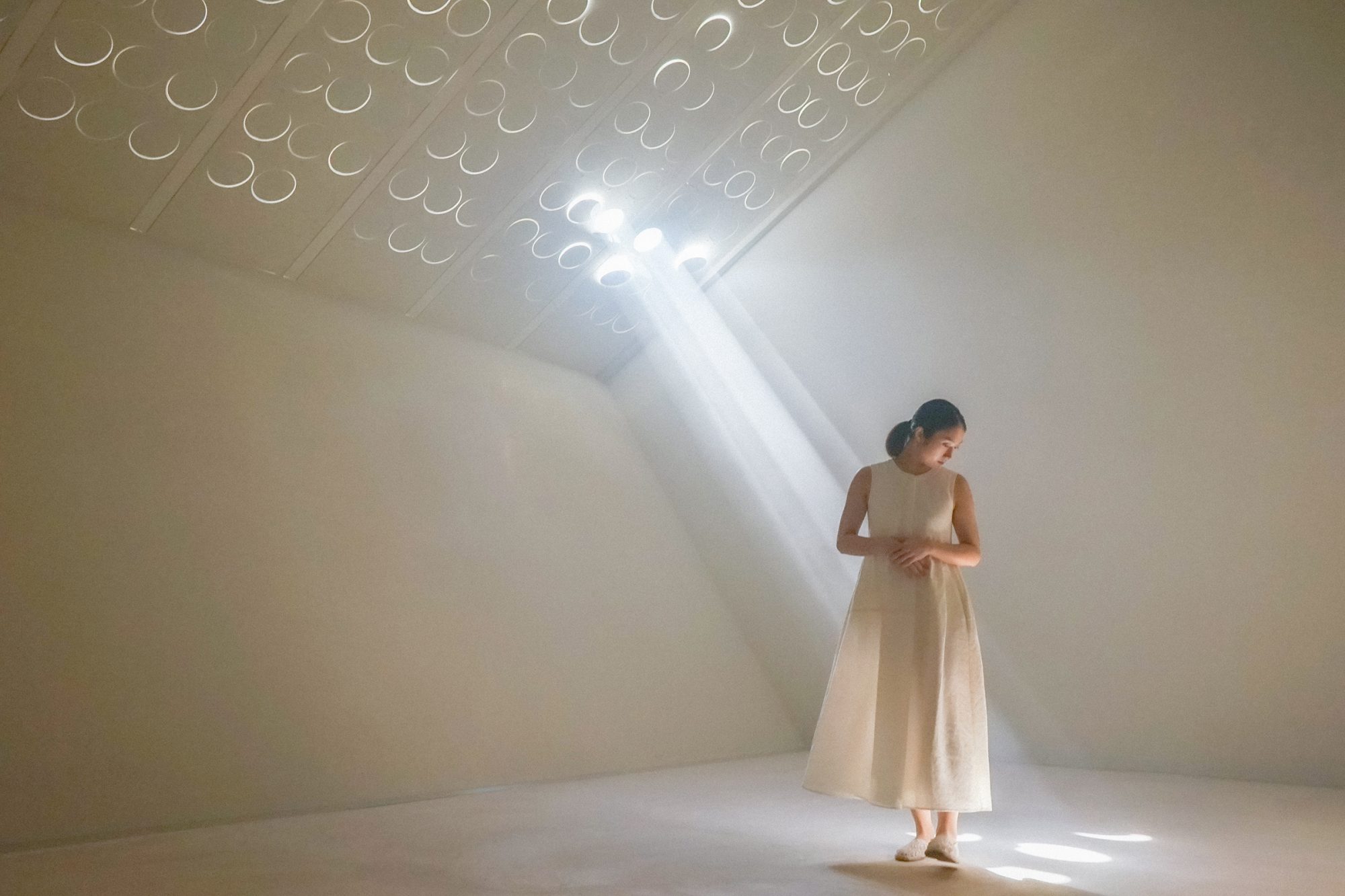25th Art Division Grand Prize
Sun and Moon Room
Interactive art
“Sun and Moon Room” Production Team[Japan]
Outline
Sun and Moon Room in the Art Museum of Nature and Human Non-Homogeneity, located in Bungotakada City, Oita, houses one of the interactive art installations designed to extend one’s physicality in contact with the nature. The concept of this work is a room where visitors can play with sunlight. As visitors walk through the room, small apertures on the ceiling automatically open and close, following their movements. The aperture system is designed to envelop the visitors’ bodies in light and to change the shape of the light cast at their feet, mimicking the waxing and waning of the moon. Visitors’ movements are detected by sensors, which trigger to open only the apertures located in the direction of the sun. The room is controlled to create an interior condition that represents the weather of the moment using a program for analyzing live data released by the Japan Meteorological Agency. On a sunny day, the room becomes hazy, and visitors can observe a beam of light passing through it. The installation involves another mechanism that plays the sound of the piano as it detects the opening of the apertures, which corresponds to visitors’ movements. In this work, the technology is not directly visible. It is used only to cast select sunlight on the visitors’ bodies and deliver the experience of being in contact with nature. By delivering natural rather than artificial light, it is designed to stimulate the visual perception and warmth of sunlight, enhancing the visitors’ senses and consciousness.
Reason for Award
The sun rises from the east and sets in the west, changing its course depending on the season. Even though we understand this, it is not easy to experience how the sunlight moves. This installation uses technologies to set up a system corresponding to the sun’s moving trajectory to provide various functions that allow visitors to experience the movement of light directly. Despite its seemingly simple appearance, it is loaded with playful features that enable visitors to experience nature’s lapse of time. The jurors highly regarded the process of creating work, which consequently involved community-based research and collaboration with various groups of people. The COVID-19 pandemic has made it difficult to visit the site and experience the installation in person. As digitization and online platforms have become pervasive, we entered a new era that requires us to reexamine the meaning of physicality in experiencing things. This work responds to this very question and presents the potential to broaden the definition of media arts in the future. In recognition of its significance in today’s context, we, the jury have selected this work for the Grand Prize. (TASAKA Hiroko)



